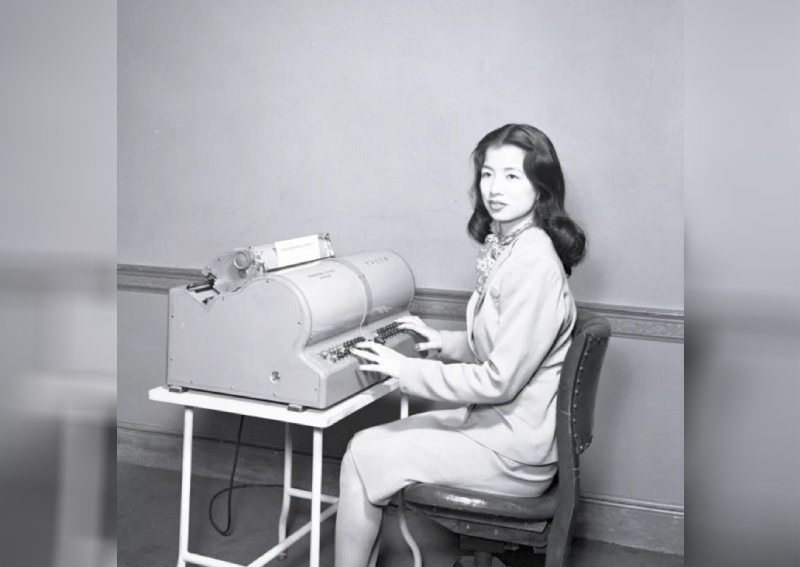
THE WHO MASTERED IBM CHINESE TYPEWRITER FREE
In any case, feel free to ask me any questions about the system, why and how I'm learning it, etc. Okay, so I'm not learning it purely so I can type wenyan on my typewriter, it's also helping me with my tones ('cause of the tonal spelling) and helping me get a better grasp of (late) Middle Chinese as a system. It also includes a syllabary of characters that can be used, one for each Romanized syllable, in effect a syllabary for Late Middle Chinese. It also uses tonal spelling in a manner akin to Gwoyeu Romatzyh, a better-known system by the same inventor. A neat side effect of this is it also provides enough distinctions to write Literary/Classical Chinese intelligibly, unlike systems like pinyin. Chao the idea is that if two characters are pronounced differently in any of the major fangyan they're romanized the same, so it can be used as a trans-dialectical system in the same way as Hanzi. So for those who don't know, General Chinese is a pan-dialectical romanization system invented by Y. They feel great linearized, in my opinion. Aruz switches have a 3mm travel, so be aware of that. Keycaps are a Model M clone profile ala Nisemono (fake) Blue Alps Model M. Looks like a full-sized Model M mixed with an SSK's case profile. KNC Electronics branded on indicator label. SKCM Blues are in great shape with no issues. KNC Electronics NTC 6153EA NKRO Alps SKCM Blue w/ box It's a nice option versus the similar Zenith 163-73 keyboard, quite a bit more rare, and has a sturdy robust case styled after the Model M, especially noticeable from the side. Cosmetically, it needs to be cleaned up and I'm just not up to it. Switches are in great shape and feel smooth. Super smooth switches.ĭoubleshot caps, US layout. Alps SKCL Cream switches have had their springs lubed for ping elimination. PCB is a Duck Eagle/Viper v1 PCB modified with holtite sockets for hotswappability with Alps switches - also modified layout so HHKB is supported by Alps, programmable with 02D software. Modified PCB for Hotswap Alps Alps SKCL Cream. Thick FAME Cherry-profile Doubleshot, Chinese pad-print Sublegend Keycaps. Overall, great if you want the closest thing to the unobtanium that is an OG IBM F77 keyboard. Very crisp, faithful Cap BS feel and sound. If you ever have a problem with something, please let me know!Įllipse/ModelFKeyboards F77 Capacitive Buckling Spring Keyboard Shipping not included but negotiable in some cases. The article also has a video from 1947 of Lois demonstrating the typewriter.Ĭlearing out a bit! See if you like something. Its surface was etched with 5,400 Chinese characters, letters of the English alphabet, punctuation marks, numerals, and a handful of other symbols. Spinning continuously at a speed of 60 revolutions per minute, or once per second, the drum measured 7 inches in diameter, and 11 inches in length.
THE WHO MASTERED IBM CHINESE TYPEWRITER CODE
Just as the film explained, “if you want to type word number 4862 you would press 4-8-6-2 and the machine would type the right character.”Įach four-digit code corresponded with a character etched on a revolving drum inside the typewriter. To type a Chinese character, one depressed a total of 4 keys-one from each bank-more or less simultaneously, compared by one observer to playing a chord on the piano. With just these 36 keys, the machine was capable of producing up to 5,400 Chinese characters in all, wielding a language that was infinitely more difficult to mechanize than English or other Western writing systems. On the keyboard affixed to the hulking, gunmetal gray chassis, 36 keys were divided into four banks: 0 through 5 0 through 9 0 through 9 and 0 through 9. The IBM Chinese typewriter was a formidable machine-not something just anyone could handle with the aplomb of the young typist in the film. 70-plus years later, she’s telling her story." It's a great article and well worth reading. He writes of Lois Lew, who mastered IBM's Chinese typewriter and ".operated the improbable, ill-fated machine with aplomb in presentations from Manhattan to Shanghai.


Mullaney, author of The Chinese Typewriter.


 0 kommentar(er)
0 kommentar(er)
